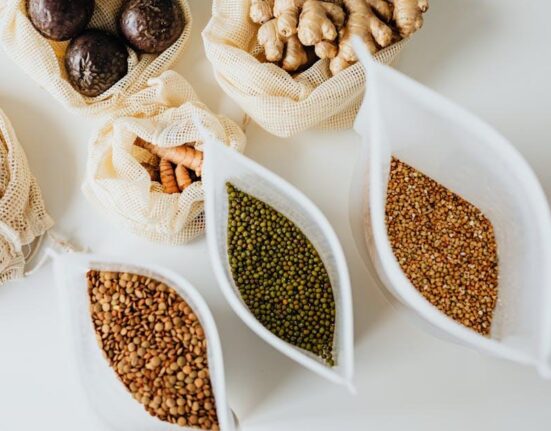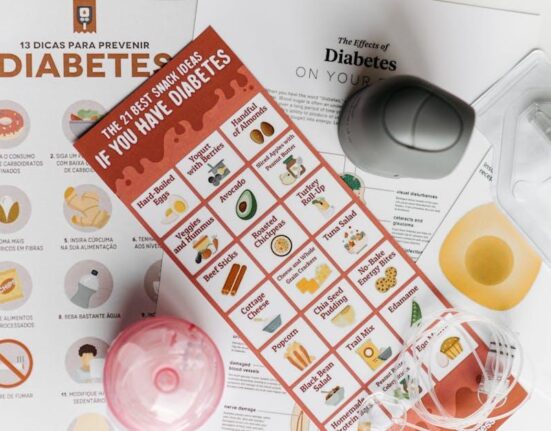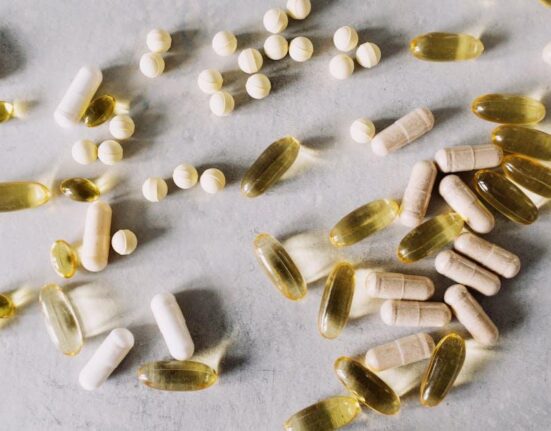Imagine your gut as a vibrant, bustling city teeming with countless microscopic inhabitants—each playing a vital role in keeping the whole system thriving. When illness strikes, this delicate ecosystem can be disrupted, leaving your digestive health and overall well-being feeling out of balance. Restoring gut flora after illness isn’t just about replenishing bacteria; it’s about nurturing a diverse, resilient community that supports digestion, immunity, and even mood. In this article, we’ll explore practical and scientifically grounded strategies to help you rebuild your gut’s microscopic metropolis and reclaim vitality from the inside out.
Table of Contents
- Understanding the Impact of Illness on Gut Flora
- Identifying Key Signs Your Gut Microbiome Needs Support
- Nutritional Strategies to Nourish and Rebuild Healthy Bacteria
- The Role of Probiotics and Prebiotics in Gut Flora Restoration
- Lifestyle Habits that Promote Long-Term Microbial Balance
- Q&A
- To Conclude

Understanding the Impact of Illness on Gut Flora
Illness, especially those involving infections or prolonged use of antibiotics, can significantly disrupt the delicate balance of gut flora. This ecosystem of beneficial bacteria plays a crucial role in digestion, immune function, and even mood regulation. When illness strikes, harmful bacteria can overpower the good microbes, leading to a state known as dysbiosis. This imbalance often results in symptoms such as bloating, diarrhea, or compromised immunity. Moreover, certain viruses and bacteria have the potential to alter the gut environment, making it less hospitable for beneficial strains to thrive.
Restoring gut flora after an illness isn’t just about replenishing bacteria; it’s about nurturing a diverse and stable microbiome. Key strategies for this restoration include:
- Consuming fermented foods like yogurt, kefir, and sauerkraut to introduce live cultures.
- Incorporating prebiotic fibers which feed beneficial bacteria, from sources like garlic, onions, and bananas.
- Staying hydrated to help flush out toxins and maintain a healthy digestive lining.
- Minimizing processed foods that can feed harmful bacteria and prolong imbalance.
| Factor | Effect on Gut Flora |
|---|---|
| Antibiotics | Reduces overall bacterial diversity |
| Viral Infection | Disturbs gut lining and immune response |
| Inflammation | Alters microbial environment negatively |
| Recovery Diet | Supports regrowth of beneficial bacteria |

Identifying Key Signs Your Gut Microbiome Needs Support
When your gut flora is out of balance, your body often sends subtle but clear signals. Persistent digestive issues like bloating, gas, or irregular bowel movements are chief indicators that your microbiome might be struggling. You may also notice increased food sensitivities or cravings for sugar and processed foods, which can further disrupt the delicate ecosystem inside your intestines. Beyond digestion, an unexpected surge in fatigue or mood swings can reflect the gut-brain connection being compromised, hinting that your gut’s microbial community needs nurturing and care.
Other signs to watch for include frequent infections, slow wound healing, or skin problems such as eczema and acne, as these can emerge when your immune system isn’t firing on all cylinders due to an imbalanced gut. To easily track your symptoms and gut health, consider the following checklist:
- Digestive discomfort: bloating, gas, constipation, or diarrhea
- Unusual food cravings or sensitivities
- Frequent fatigue or brain fog
- Recurring infections or colds
- Skin flare-ups like acne or eczema
| Symptom | What It Suggests |
|---|---|
| Bloating & Gas | Imbalance of gut bacteria |
| Brain Fog | Disrupted gut-brain axis |
| Skin Issues | Weakened immunity |
| Food Cravings | Overgrowth of harmful microbes |
| Frequent Illness | Compromised immune response |

Nutritional Strategies to Nourish and Rebuild Healthy Bacteria
After illness, supporting your gut with the right nutrients can accelerate the recovery of healthy bacteria. Focus on incorporating prebiotic-rich foods such as garlic, onions, leeks, and asparagus. These natural fibers act as fuel for beneficial microbes, stimulating their growth and diversity. Pairing prebiotics with probiotic sources like yogurt, kefir, sauerkraut, and kimchi helps introduce live bacteria directly into your system, restoring balance more effectively. Additionally, maintaining adequate hydration and minimizing processed sugars and unhealthy fats sets the perfect stage for your microbiome to thrive.
To simplify your nutritional approach, consider the following key food categories known to rebuild gut health:
- Fermented Foods: Rich in live cultures that repopulate gut flora
- Fiber-Dense Vegetables: Support microbial diversity and gut motility
- Polyphenol-Rich Fruits: Blueberries, apples, and green tea boost microbial antioxidants
- Whole Grains: Assist in maintaining long-term microbiome resilience
| Category | Examples | Benefit |
|---|---|---|
| Fermented Foods | Kefir, Sauerkraut | Introduce beneficial bacteria |
| Prebiotic Vegetables | Garlic, Onions, Asparagus | Feed good bacteria |
| Polyphenol Fruits | Blueberries, Green Tea | Enhance microbial diversity |

The Role of Probiotics and Prebiotics in Gut Flora Restoration
Revitalizing the gut flora after illness is a delicate process where probiotics play a starring role. These live beneficial bacteria help repopulate the digestive system, restoring balance and enhancing immune function. Consuming probiotic-rich foods like yogurt, kefir, sauerkraut, and kimchi introduces strains such as Lactobacillus and Bifidobacterium that actively compete with harmful bacteria, fostering a healthier intestinal environment. Integrating a diverse array of probiotics can accelerate recovery and alleviate digestive discomfort.
However, probiotics alone don’t complete the picture. Prebiotics act as the essential nourishment that supports these beneficial microbes. Found in dietary fibers like inulin, fructooligosaccharides (FOS), and resistant starches, prebiotics are critical for sustaining bacterial growth and activity. Foods such as garlic, onions, leeks, asparagus, and bananas are natural sources that can be seamlessly woven into your daily meals. Below is a simple guide illustrating key prebiotic sources and their effects:
| Prebiotic Source | Main Benefit | Recommended Serving |
|---|---|---|
| Garlic | Enhances beneficial bacteria growth | 1-2 cloves per day |
| Onions | Improves gut diversity | Half a medium onion |
| Asparagus | Boosts short-chain fatty acid production | 5-7 spears |
| Bananas | Supports digestion and prebiotic activity | 1 medium banana |

Lifestyle Habits that Promote Long-Term Microbial Balance
Achieving a thriving gut microbiome extends beyond short-term fixes and involves embracing daily routines that nurture microbial diversity. Prioritize consuming a variety of fiber-rich foods such as vegetables, fruits, legumes, and whole grains, which act as natural prebiotics, fueling the growth of beneficial bacteria. Staying hydrated and maintaining a consistent sleep schedule support the natural rhythms of your digestive system, while moderate physical activity encourages healthy gut motility and microbial interactions.
Stress management is equally crucial; chronic stress can upset microbial balance by releasing hormones that alter the gut environment. Incorporate mindful practices like meditation, yoga, or deep-breathing exercises to maintain harmony between your mind and gut flora. Avoiding unnecessary antibiotics and reducing high-sugar and processed food intake further protect your microbiome’s resilience, cultivating a lush ecosystem from which your well-being can flourish.
- Eat diverse plant-based foods for fiber and antioxidants
- Stay hydrated with water and herbal teas
- Maintain regular sleep patterns
- Engage in daily physical activity
- Practice stress reduction techniques to safeguard gut harmony
- Limit antibiotics and processed sugars
| Habit | Impact on Microbiome |
|---|---|
| Diverse Plant Foods | Boosts beneficial bacteria growth |
| Regular Sleep | Regulates gut circadian rhythms |
| Stress Management | Reduces inflammatory hormones |
| Physical Activity | Improves gut motility |
Q&A
Q&A: How to Restore Gut Flora After Illness
Q1: Why is gut flora important, especially after an illness?
A1: Think of gut flora as a bustling ecosystem inside your digestive tract, made up of trillions of helpful bacteria. After an illness—particularly if you’ve taken antibiotics—this microscopic community can be disrupted, like a forest after a storm. Restoring gut flora is essential because these microbes aid digestion, support immunity, and even influence mood and energy levels.
Q2: How does illness or medication harm gut flora?
A2: Illnesses, especially infections, and medications such as antibiotics don’t discriminate; they often wipe out both harmful and beneficial bacteria. This disturbance can lead to decreased diversity and imbalance, paving the way for digestive discomfort, weak immune responses, or conditions like antibiotic-associated diarrhea.
Q3: What are the first steps to take to help gut flora recover?
A3: Start with patience and gentle care. Hydrate well, eat nourishing foods, and avoid processed or highly sugary items that can feed bad bacteria. Restoring your gut’s natural balance is like nurturing a garden—you need to remove stressors and provide the right environment for good bacteria to thrive.
Q4: Which foods best support gut flora restoration?
A4: Embrace probiotic-rich foods such as yogurt, kefir, sauerkraut, kimchi, and miso—these contain live beneficial bacteria. Additionally, feed these bacteria with prebiotics: fibers found in garlic, onions, leeks, bananas, and whole grains. Together, probiotics and prebiotics create a welcoming home for your microbiome.
Q5: Can supplements help rebuild gut flora?
A5: Probiotic supplements can be a valuable ally, especially after antibiotic treatments. Look for strains like Lactobacillus and Bifidobacterium, known for their gut-friendly properties. However, not all probiotics are equal, and it’s wise to consult a healthcare provider to find one tailored to your needs.
Q6: Are lifestyle habits important in gut flora recovery?
A6: Absolutely. Regular exercise, stress management, and sufficient sleep support a healthy gut environment. Stress, in particular, can negatively influence your gut bacteria composition, so techniques like meditation or gentle yoga can indirectly aid restoration.
Q7: How long does it typically take to restore gut flora after illness?
A7: Restoration times vary widely—some people notice improvements within days, while for others it might take weeks or months. Consistency with diet, supplements, and healthy habits plays the starring role in this timeline.
Q8: When should you see a doctor about gut-related issues post-illness?
A8: If symptoms like persistent diarrhea, bloating, or abdominal pain linger beyond a couple of weeks, or if you experience severe discomfort or weight loss, it’s important to seek medical advice. These could signify an imbalance needing targeted treatment.
By nurturing your gut flora thoughtfully after illness, you’re not just healing your digestive system—you’re restoring a cornerstone of overall wellness.
To Conclude
Restoring your gut flora after illness is more than just a biological reboot—it’s a journey back to balance, resilience, and well-being. By nurturing your microbiome through mindful nutrition, gentle self-care, and patience, you help your inner ecosystem flourish once again. Remember, your gut is a living community that thrives on harmony, so treat it with kindness and your body will thank you in countless ways. Embrace the process, listen to your body, and step confidently toward a healthier, more vibrant you.














Leave feedback about this